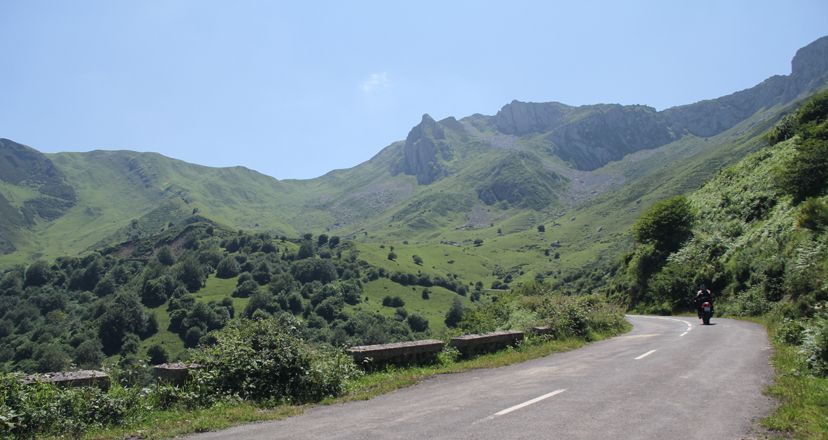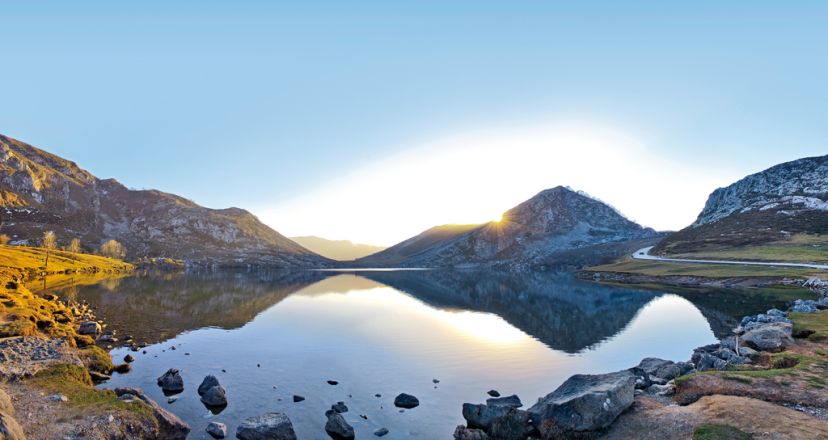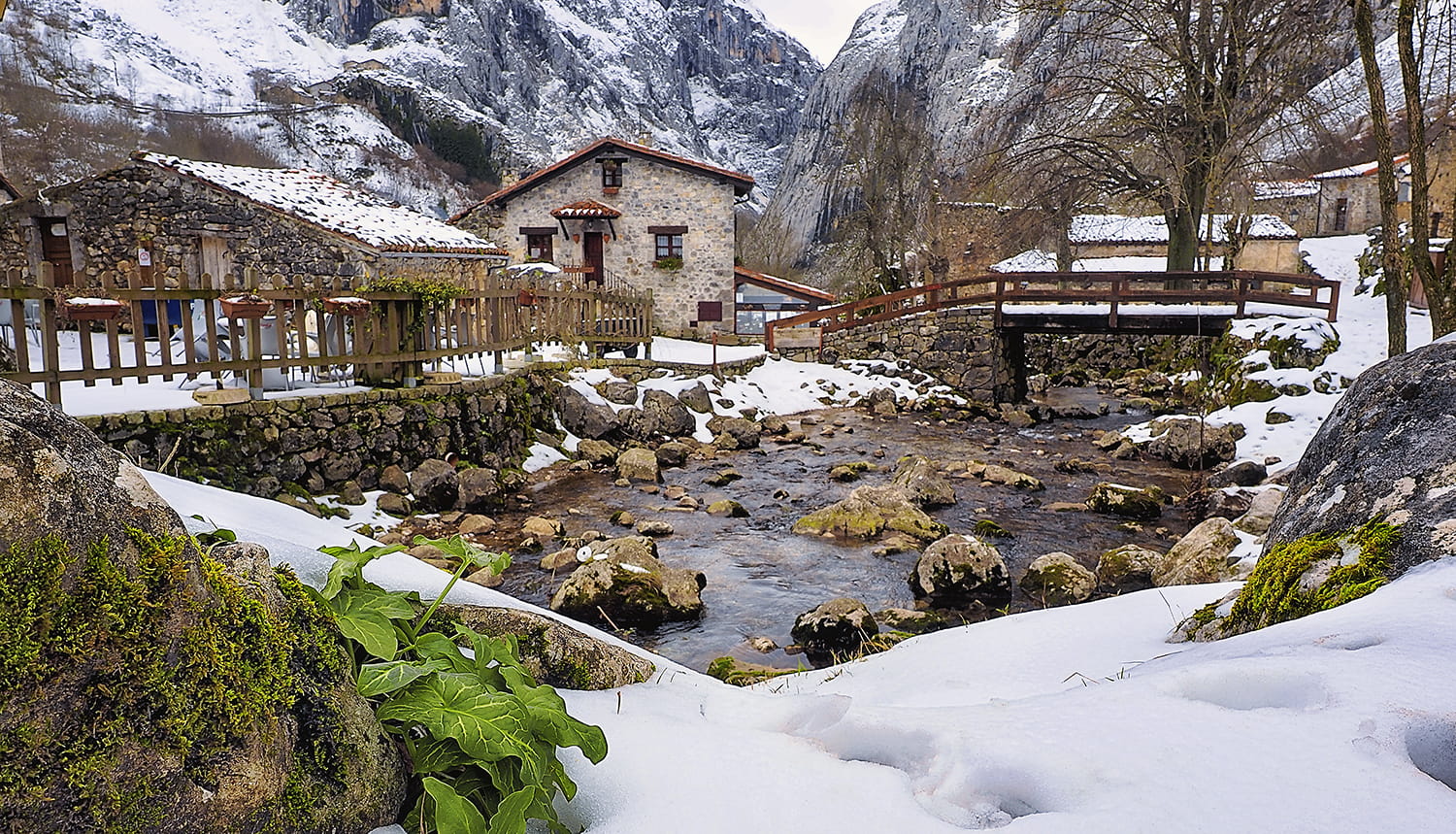Back Top 10 things to see and do in Aller
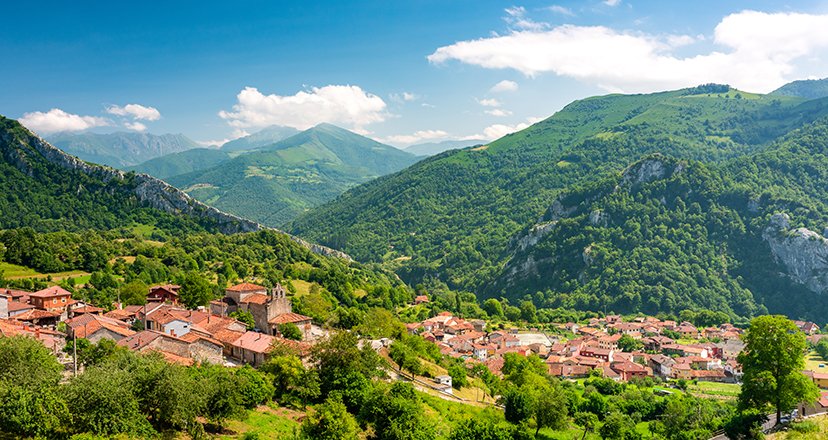
Top 10 things to see and do in Aller
Aller is characterised by its immensity and beauty. Extensive and intense, you can lose yourself in its forests and mountains, its trees, its rivers and waterfalls, and its villages, among other charms.
Aller is one of those Asturian councils characterised by its immensity and beauty. Extensive and intense, in Aller you can lose yourself in the paths of history, find vestiges of the ancient kingdom of Asturias wrapped in legends, enjoy places where nature and all its strength fill your spirit, contemplate dreamlike panoramic views, or discover a unique cultural heritage.
And of course, discover the secrets of one of the most remarkable Roman roads on the Iberian Peninsula: La Carisa. And if you like sports in the heart of nature, there are many hiking and cycling routes, as well as the option of skiing or simply enjoying the surroundings in the youngest resort on the Cantabrian coast.
What's more, when it comes to tasting unique Asturian delicacies , Aller has a great gastronomic and festive personality, with Panchón being one of its most unique homemade desserts.
the 10 best things to see and do in Aller await you
Villages to walk through history
The landscape of Aller is dotted with villages and hamlets with flavour and tradition, set in idyllic spots.
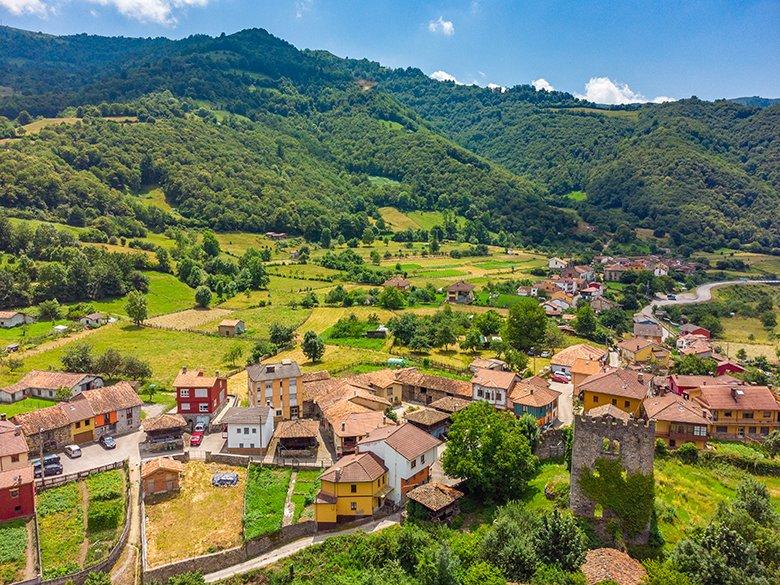
A stroll through the villages of Aller is a walk through history. And good proof of this can be found in Peḷḷuno and Soto de Aller, both linked by the surprising and magical biography of Queen Doña Urraca, the result of the passionate love affair between Doña Gontrodo Petri and King Alfonso VII of Castile. Both in Peḷḷuno and in Soto - which has the remains of a striking medieval tower - there are archaeological remains, and oral and written testimonies of this episode that would be key in the future of Asturias.
But there are also other villages such as Felechosa or Pola Vieya/Pola del Pino, with a great mountaineering and skiing tradition, where the most typical Asturian gastronomy is also pampered to the maximum.
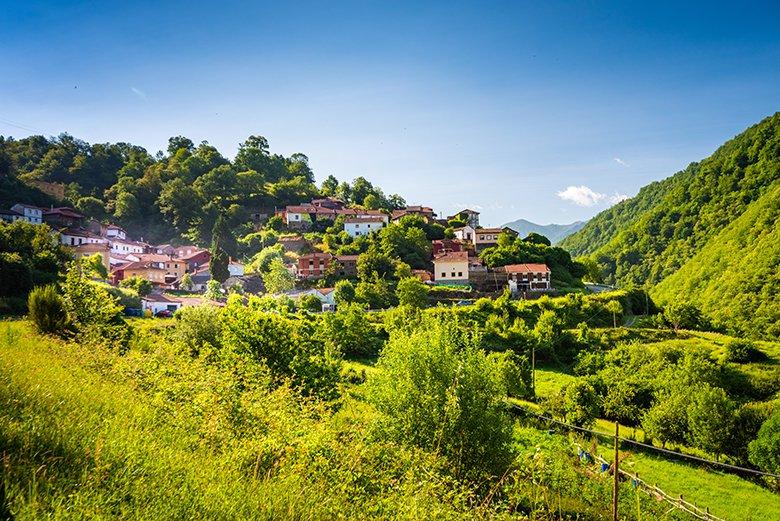
In the case of Murias and Santibanes de Murias, their rural landscapes become picturesque and lush, and their proximity to the famous Xurbeo waterfall makes them a mecca for hikers in search of this natural jewel.
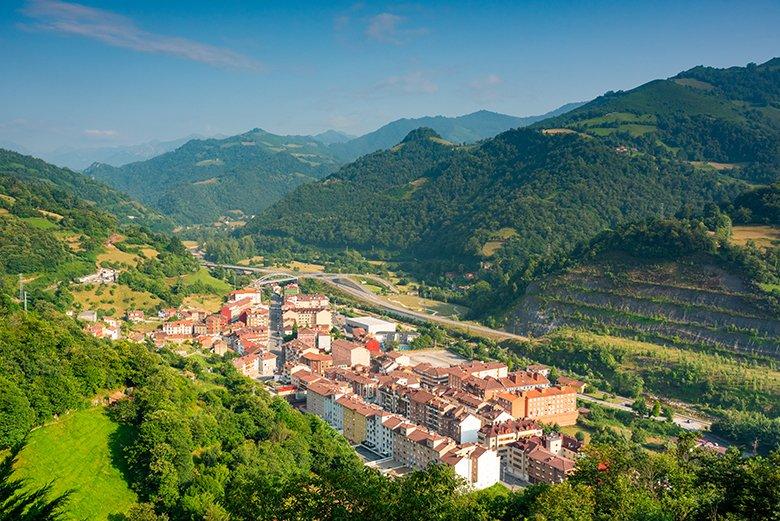
Obviously, an itinerary through Aller must include a visit to Cabanaquinta/Cabañaquinta, a village with a stately air that is the capital of the council. As well as a stroll through Morea/Moreda, one of the liveliest villages in the area, with interesting examples of industrial heritage, and with festivals as well known and declared of Tourist Interest as the Humanitarians, and which was also an Exemplary Village of Asturias in 2007.
Natural landmarks that will leave you spellbound
Aller has some places whose originality, authenticity and beauty make them true natural landmarks that you cannot miss on your tour of this always surprising area.
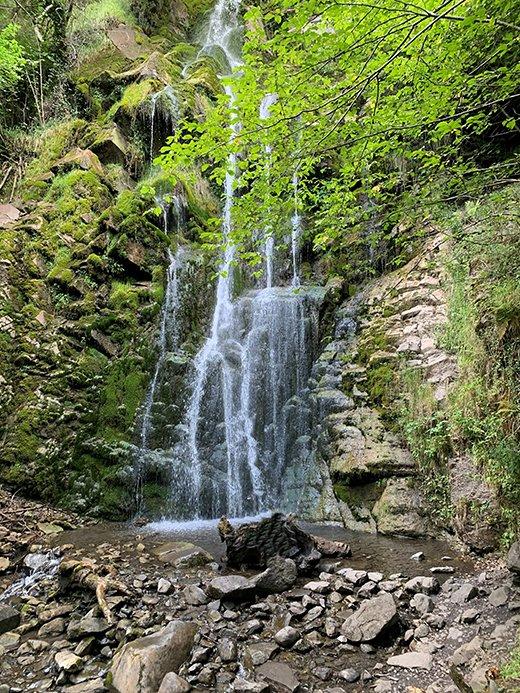
One of them is the Xurbeo waterfall, which is barely a kilometre from the village of Murias, and is considered one of the most beautiful natural waterfalls in the whole of Asturias. Tucked away in a small nook on the side of the valley carved out by the river Negro, the road to Xurbeo is a succession of dense green cloaks, broken only by the presence of the village of Murias, with its family vegetable gardens and its terraced houses on the mountainside. Xurbeo is high and mighty, with small lateral falls that widen it. It is open and its crystal-clear waters glisten against the dark stone.
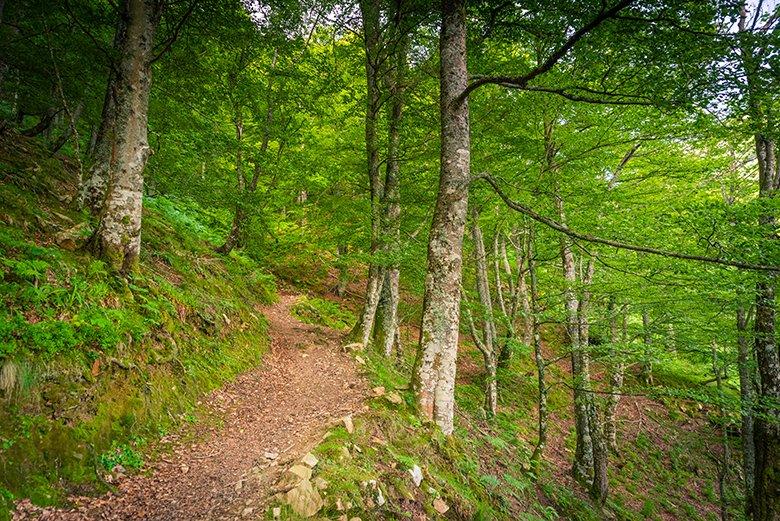
Another of the most outstanding is the Gumial forest, considered one of the most spectacular beech forests in the Central Mountains. With the particularity, moreover, that to reach its core, you will have to walk among hazel and chestnut trees, blueberries, heather and other native species. And the climax could not be more surprising: the arrival at the "braña" or "majada" of Gumial, a group of old shepherds' huts where tradition, experience and legend come together.
And if any place in Asturias can boast of seals in Asturias, it is Aller, because this municipality is home to two of the most famous seals in the Principality: the Aller river seals and the Pino seals.
The Aller river, which rises in the Vegarada pass, creates an impressive gorge on the slopes of La Panda peak and the Sierra del Campanal mountain range. This is mainly due to the karstic erosion of its waters, which create waterfalls and torrents in the narrow gorge. A landscape, without a doubt, of singular beauty.
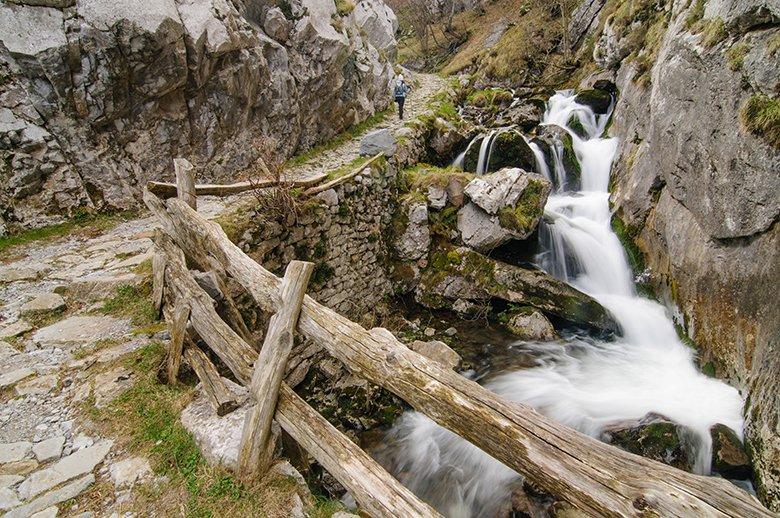
The so-called Foces de El Pino, which form part of the well-known hiking route called Foces de El Pino y de Ruayer, form a gorge of almost one kilometre, with impressive vertical rocky walls that the river Valmartín eroded over millions of years. The name Foces de El Pino comes from the nearby village of El Pino.
Santibanes de la Fuente: The most Jacobean yew tree
The yew tree of Santibanes de la Fuente is the most Jacobean of all Asturias, as it is part of the Camino de Santiago coming from León. So many pilgrims have seen and felt this tree, which is currently twenty metres high and has a trunk circumference of more than three metres.
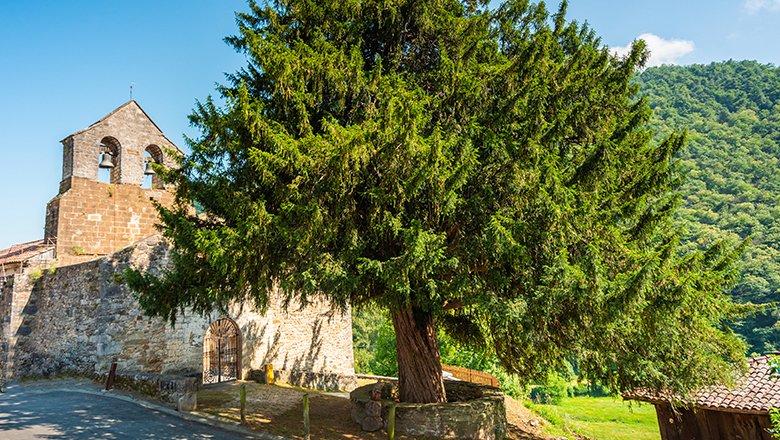
Although its longevity is more than evident, its exact age is not known, although it is more than likely to be more than 500 years old.
Like most Asturian yew trees, it is located next to a church, as Christianity places its places of worship in the same places where the Celts worshipped their sacred trees - which, curiously enough, were the yew trees.
In this case, the church is that of San Juan de Rumiera, one of the exponents of Romanesque architecture in the council of Aller.
Mountain viewpoints: Coto Bello
You will soon realise the essence of Allerano. And the splendid viewpoint of Coto Bello is one of those places that will make you realise that you are in a land of peaks and forests, of eternal mountain ranges, of hunting and bellowing, of transit to the Meseta and vice versa, of shepherding and coal, and of cycling.
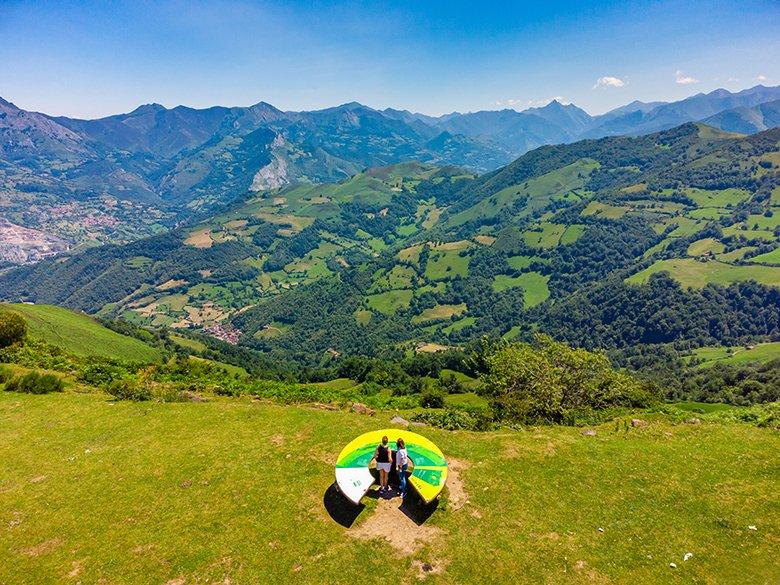
From Corigos, and after a 10-kilometre climb up the road (the one that led to the old mining operation that used to be there), you will reach this marvellous viewpoint, which is a must-see.
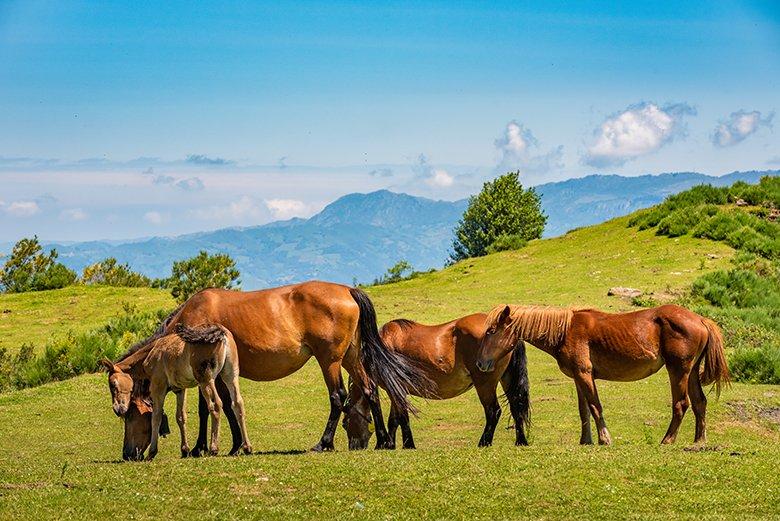
You will be located at an altitude of 1,128 metres, between the Conforcos mountain range and the Murias and Santibanes mountain range, on a natural balcony that offers exceptional views of the Cantabrian mountain range and the Aller valley.
With the advantage, moreover, that from here you can enjoy wonderful hiking and mountain biking routes.
And to contemplate such beautiful scenery, the Aller town council runs a tourist train during the summer season.
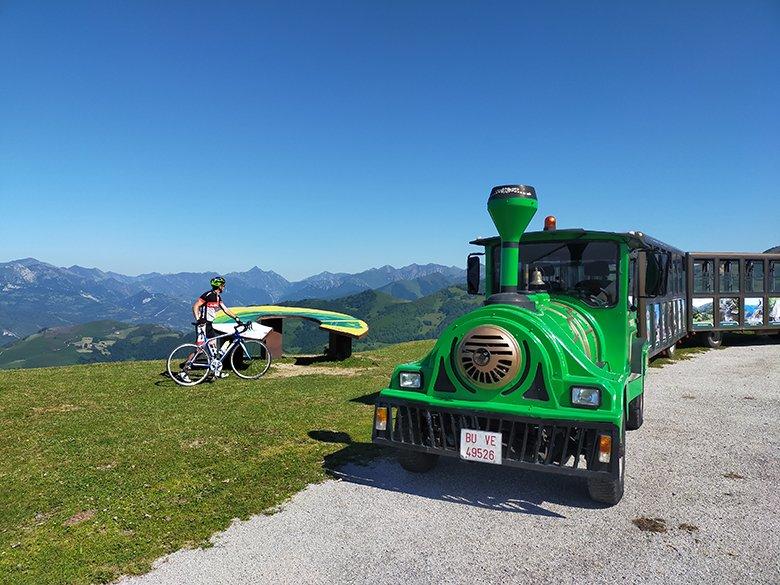
A remarkable spiritual heritage: churches to fall in love with
Aller conserves a notable religious heritage, and some of its greatest exponents are to be found in the rural environment.
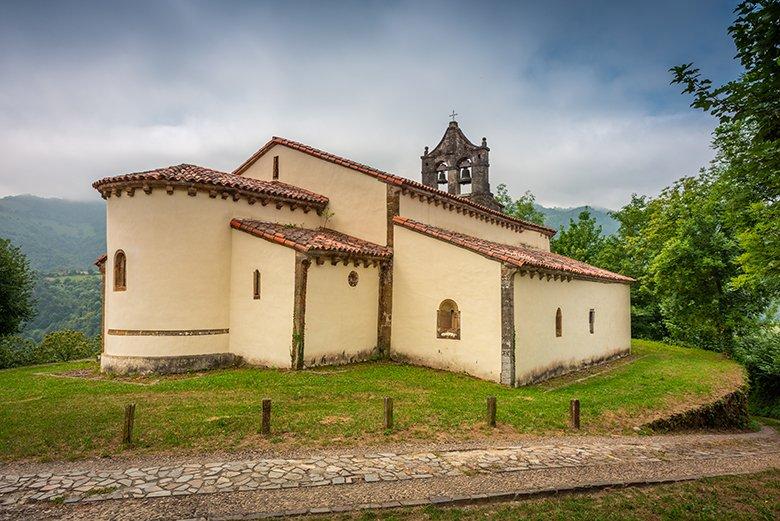
One of the best examples of this architectural and spiritual wealth is the church of San Vicente de Serrapio, located in the village of the same name.
Romanesque in style and dating from the 12th century, scholars say - according to some preserved inscriptions - that it had a pre-Romanesque origin, although it no longer preserves elements from that period.
Curiously, a votive tombstone dedicated to Jupiter has survived to the present day , which suggests that it was initially erected over a pagan temple from Roman times. It also has interesting mural paintings in the apse chapels, as well as some exceptional capitals.
So there are many Ages that you will sense in the rural San Vicente de Serrapio!
The church of San Juan de Rumiera, located in Santibanes de la Fuente, was built in the 13th century and its style is late Romanesque, with some additions in the 15th and 16th centuries, such as the main doorway.
As with San Vicente de Serrapio, San Juan de Rumiera will allow you to travel through different historical periods, in this case through its altarpieces and carvings, as it has Romanesque, Gothic and Baroque ones.
An intense journey through time awaits you!
A Roman one: the Carisa
In Aller you can really live a Roman experience, as this territory is an active and protagonist part of the history of the Via Carisa, considered the first and main Roman road in Asturias.
The Carisa, which runs through the high mountain ranges of Aller and Lena, owes its name to the Legate of Octavian Augustus in Lusitania, called Publius Carisius.
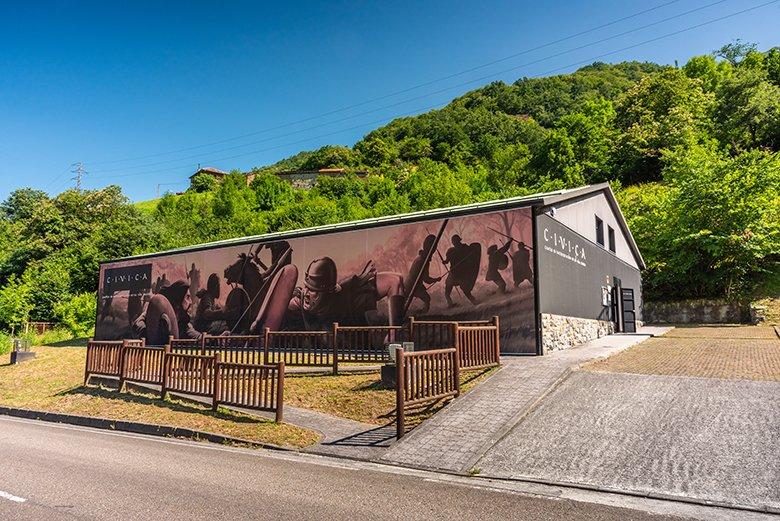
Travelling along the Carisa and its spectacular landscapes is quite an experience, and if you want to learn more about this magnificent history, you can visit the Via Carisa Interpretation Centre, located in the town of La Fistieḷḷa. This is a space dedicated to explaining in detail everything related to the Carisa, which was and is much more than just a means of communication, according to the continuous archaeological discoveries that have taken place in recent years.
Pozo San Fernando: Mining territory
Aller has always been a mining area, due to the great wealth of its subsoil. Nowadays, much of this activity is already history, but living history, because Aller has been able to preserve and remember some traditions and heritage landmarks.
One example is the San Fernando well, linked to the dawn of the first industrial revolution in Asturias and to one of its driving forces: the engineer and businessman José Tartiere Lenegre, creator of the Sociedad Industrial Asturiana Santa Bárbara.
With the passage of time, in 1950, the SIA deepened the San Fernando well, near Uriés. This shaft is different from the others: it is a balance shaft with a different coal evacuation system to the vertical shafts, which was adopted due to its location in the middle of a hillside. In this way, the ore came out of the San Fernando shaft which, almost two kilometres long, was located at the bottom of the valley.
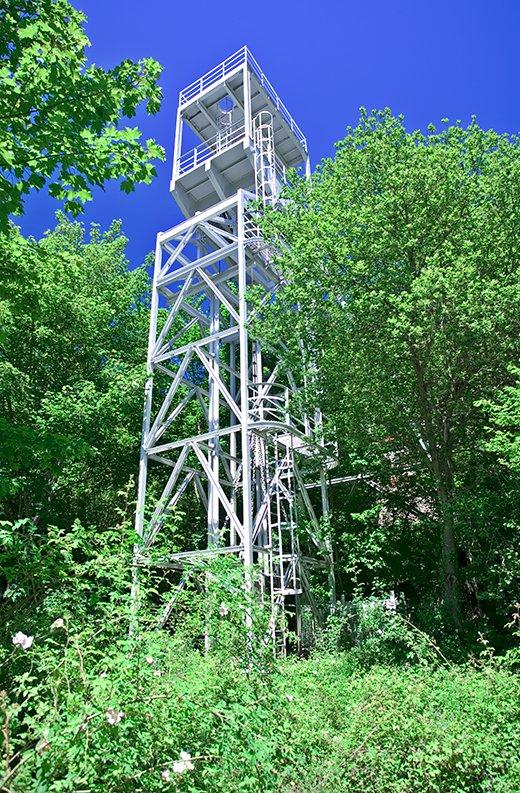
Although mining activity in the San Fernando shaft ceased in 1967, the 15-metre high steel derrick, the powerhouse building and the San Fernando shaft are still preserved in beautiful surroundings. A site worth seeing and admiring.
In addition, in the summer months, Aller Town Council organises guided tours and dramatised routes to tell you about this prodigious history.
The youngest ski resort on the Cantabrian Coast
Aller offers you the chance to ski in its territory and to do so in the youngest and most modern alpine ski resort on the Cantabrian coast.
The Fuentes de Invierno ski resort was opened in 2007 and has state-of-the-art facilities.
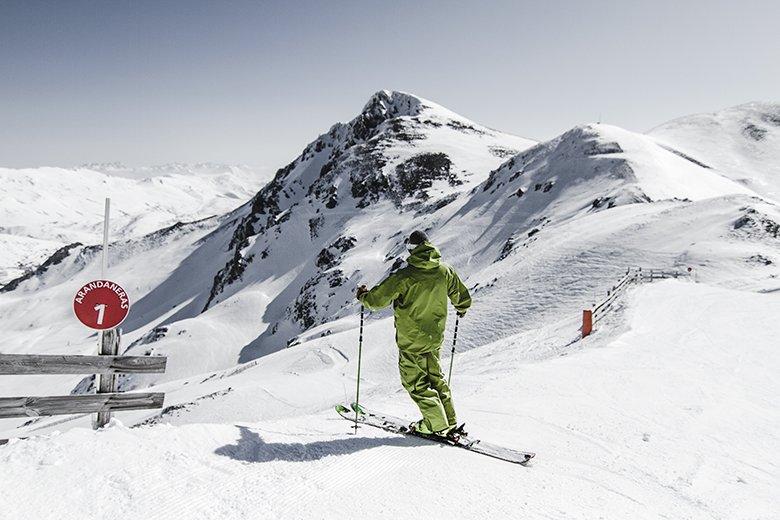
Framed in a privileged landscape, going to Fuentes de Invierno is more than just practising the white sport. In fact, it means connecting with unspoilt nature with peaks and valleys, at an altitude of over 1,500 metres, in a healthy environment.
All this with the advantage that in the area around Fuentes de Invierno you can enjoy excellent gastronomy, dozens of routes to enjoy, as well as an interesting cultural heritage, among other charms.
Much more than a hiking route
The ascent to Peña Mea is much more than a hiking route, due to the emblematic nature of this summit of over one thousand five hundred metres in altitude, which is the border and union, at the same time, of the councils of Aller and Laviana.
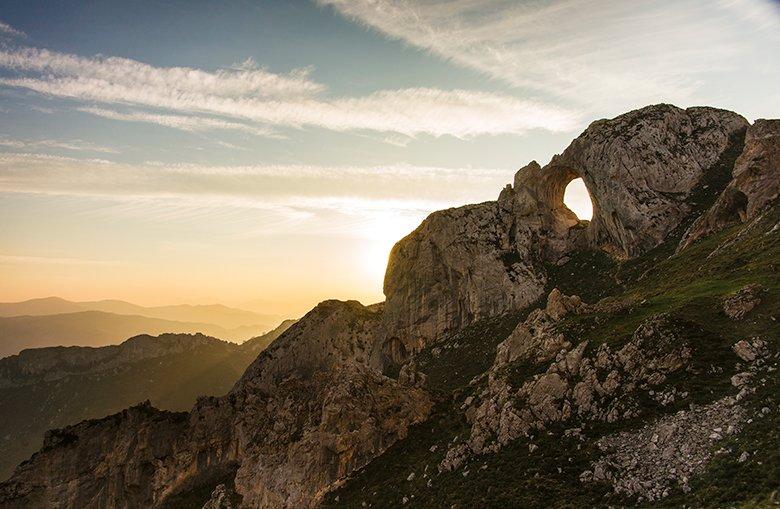
On the Allerano side, the route begins at the Barrocima, located less than five hundred metres above Peḷḷuno, right next to the parish church of Santa María La Real, in Baroque style (XVII-XVIII century).
From this point, following the signs of the PR-AS 262, the route goes uphill until it reaches La Coḷḷá de Peḷḷuno. From here, you will start walking along a narrow, steep and difficult path until you finally reach the famous "güeyu" (eye) of Peña Mea, a spectacular hollow that opens up in the middle of the mighty rock, and when the sun's rays pass through it, it produces unique optical effects.
And from there to the summit.
Wonderful satisfaction and panoramic views!
The best way to sweeten your life: the panchon
Aller is one of those places where you can easily sweeten your life, because its gastronomy is delicious and varied, and of course it has its own dessert.
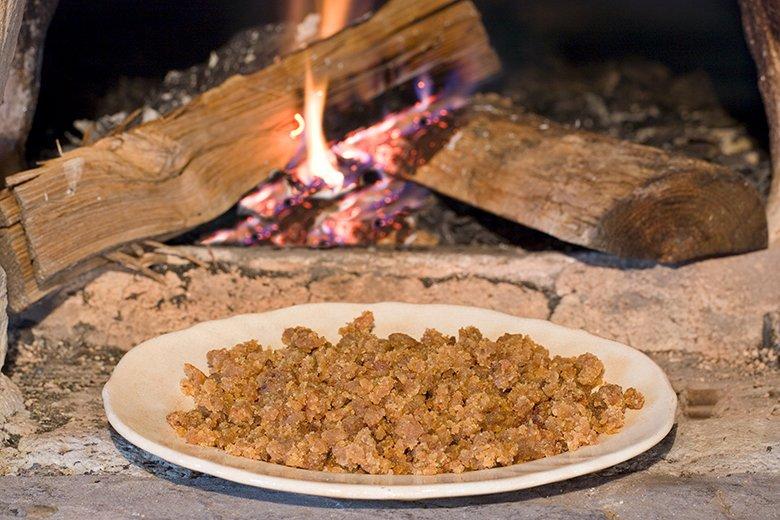
The 'panchón', as the sweet creation is called, is made with great care at different times of the year, but especially during important and traditional festivities.
Tradition has it that on pilgrimage days, when the young men left the chigres (bars) at dawn, they would go to their brides' houses to 'pedía del panchón', a custom that still survives in some villages.
This very special dessert, which will delight your palate, involves a laborious process that begins with the preparation of the pancha dough (round bread), which is obtained by mixing flour, yeast, salt and hot water. It is then wrapped in cabbage leaves, placed in the llar (traditional Asturian household kitchen) and covered with ashes, embers and other materials that burn easily, such as spelt husks.
Once the pancha is cooked, it is crumbled and, in a saucepan, it is mixed with lard and sugar.
Doesn't it make your mouth water?
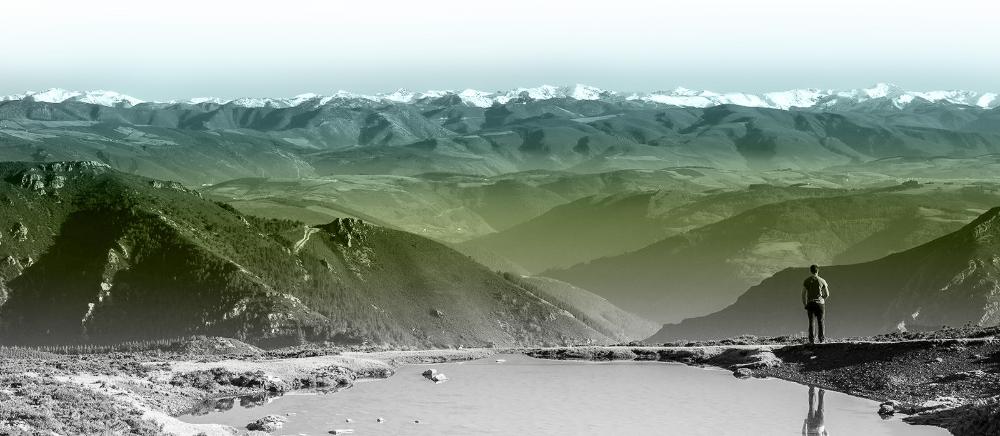
Subscribe to our newsletter and take advantage of offers, discounts, and news
Subscribe

